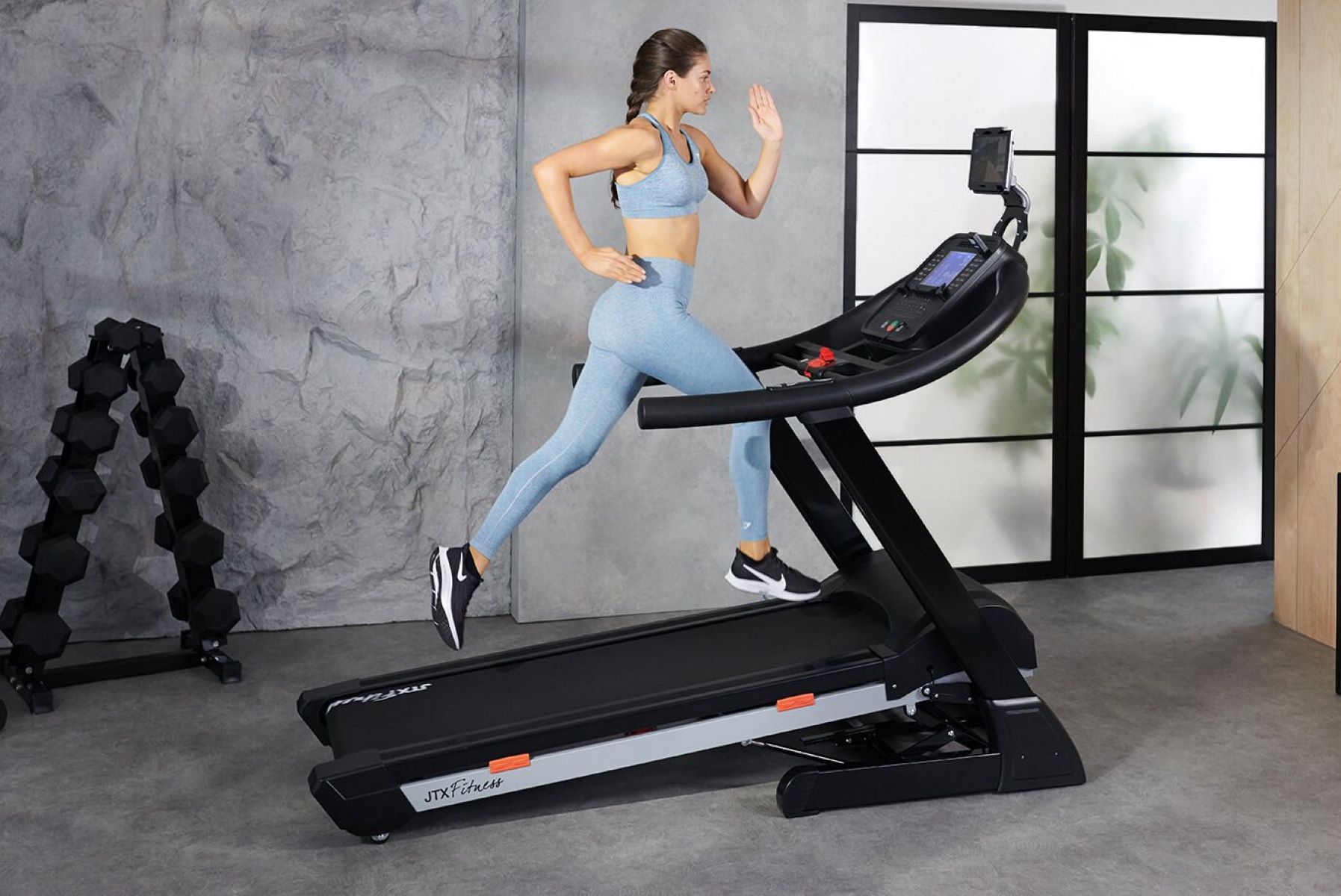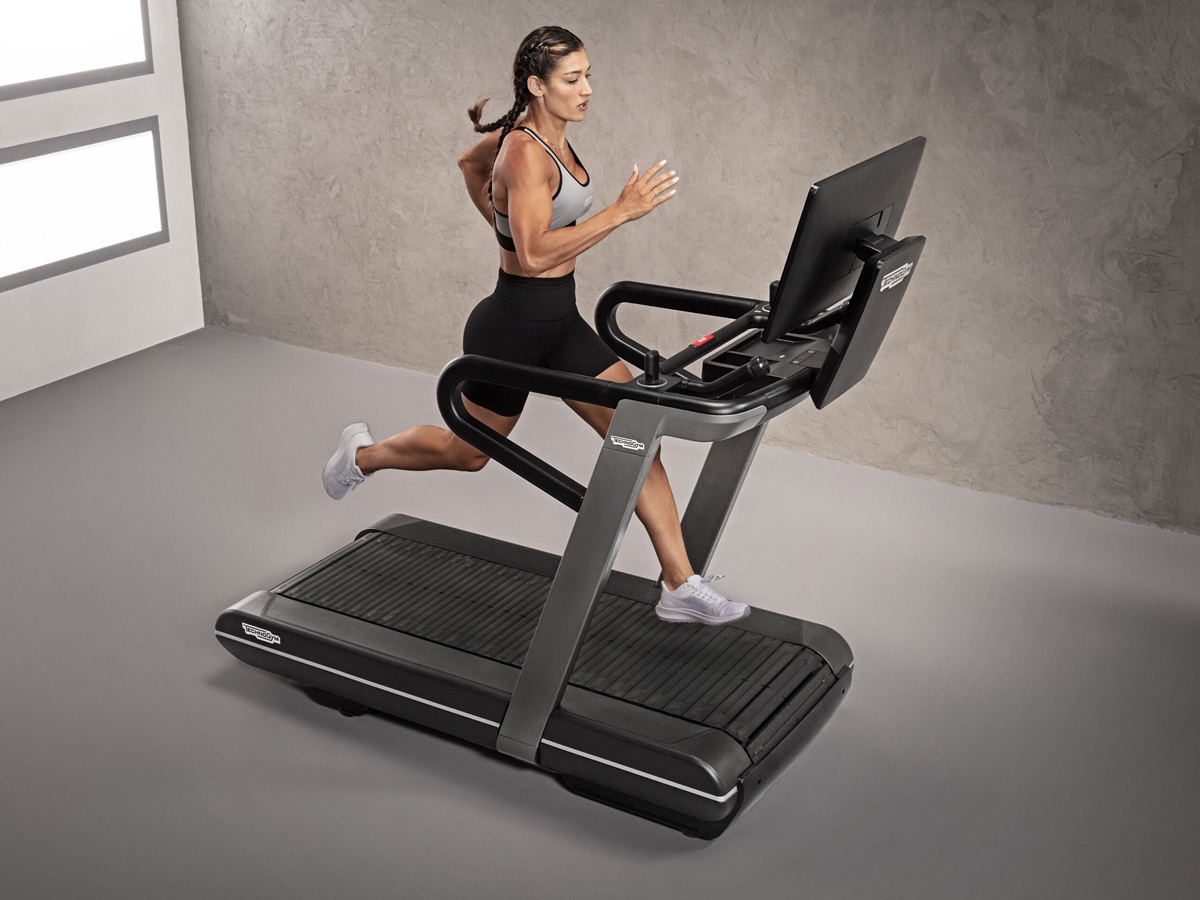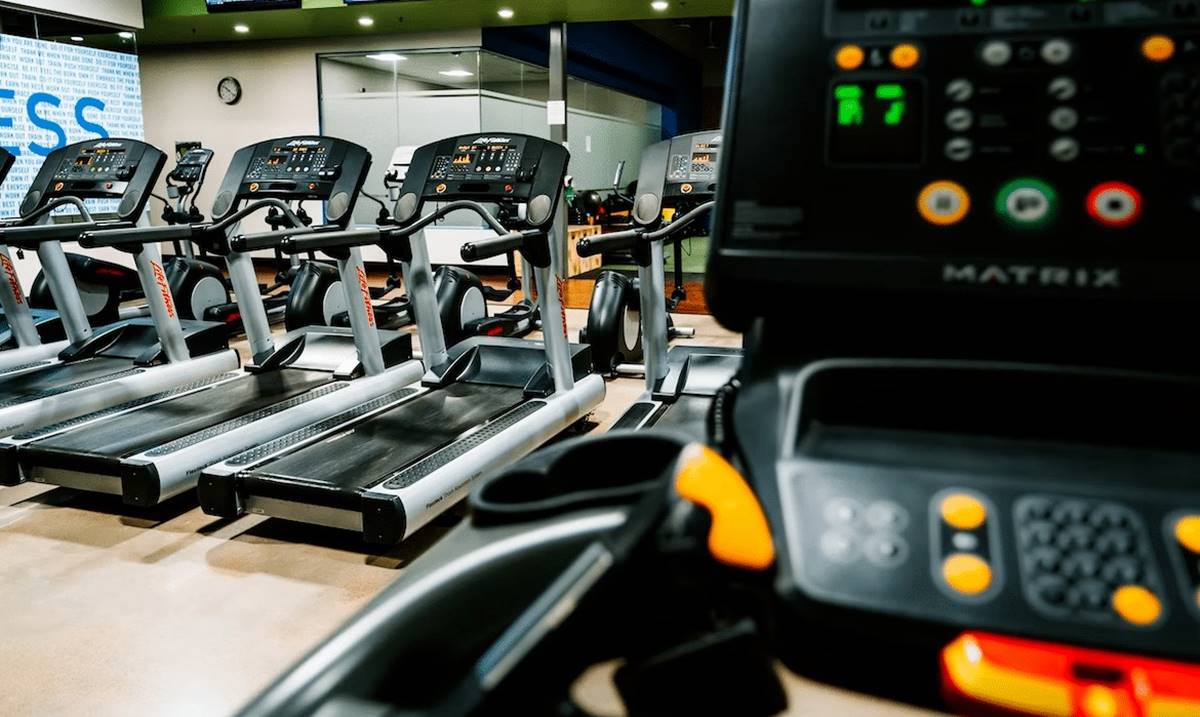

Featured
What Speed Is A Sprint On A Treadmill
Modified: August 21, 2023
Discover the featured speed for sprinting on a treadmill and maximize your workout routine. Find out the optimal pace to achieve your fitness goals!
Introduction
Sprinting on a treadmill is a popular form of exercise that offers numerous benefits for individuals looking to improve their cardiovascular fitness and overall athleticism. Whether you’re a professional athlete or a fitness enthusiast, incorporating sprinting into your workout routine can help you boost your endurance, burn calories, and increase your speed and agility.
Unlike jogging or steady-state cardio, sprinting involves short bursts of intense effort, followed by periods of rest. This high-intensity interval training (HIIT) approach not only helps you burn more calories in a shorter amount of time but also improves your aerobic and anaerobic fitness levels.
However, it’s important to understand that sprinting on a treadmill is different from running outdoors. The treadmill’s moving surface and predetermined speed settings can impact your sprinting mechanics, compared to the natural and variable terrain you encounter when sprinting outdoors.
In this article, we will explore the factors that affect sprint speed on a treadmill, how to determine your sprint speed, the benefits of treadmill sprinting, and safety tips to keep in mind while sprinting on a treadmill to help you get the most out of your workouts.
Understanding sprinting on a treadmill
Sprinting on a treadmill requires a different approach and technique compared to sprinting outdoors. Understanding the mechanics of treadmill sprinting will help you optimize your performance and prevent injuries.
One of the key differences is that the treadmill belt is moving under your feet, whereas when running outdoors, you have to propel yourself forward. This means that the ground reaction forces are slightly different, and you don’t have to push off as forcefully to accelerate.
When sprinting on a treadmill, it’s important to maintain good posture and a strong core. Keep your shoulders relaxed, engage your abdominal muscles, and avoid hunching over. This will help you maintain stability and balance as the treadmill belt moves.
Additionally, your foot strike pattern may differ on a treadmill compared to outdoor surfaces. On a treadmill, your foot tends to land more towards the middle of the belt, as the moving surface can pull your foot backward if it’s too far forward. Experiment with your foot strike position to find the most comfortable and efficient technique for you.
It’s also worth noting that the speed displayed on the treadmill may not be entirely accurate. Due to various factors such as belt slip and calibration differences, there can be a slight discrepancy between the displayed speed and the actual speed you’re running. This doesn’t mean you can’t rely on the treadmill’s speed setting, but it’s important to be aware of this potential discrepancy.
Understanding the nuances of sprinting on a treadmill will allow you to adjust your technique and maximize the benefits of your workouts. With consistent practice and proper form, you can improve your sprinting performance and achieve your fitness goals.
Factors Affecting Sprint Speed on a Treadmill
Several factors can influence your sprint speed when running on a treadmill. Understanding these factors and how they impact your performance will help you better adjust your training and achieve optimal results.
1. Treadmill Belt Speed: The speed at which the treadmill belt moves directly affects your sprint speed. Adjusting the speed setting to match your desired intensity level is crucial. Start with a comfortable pace, gradually increasing the speed as you become more comfortable and confident.
2. Incline: The incline setting on a treadmill simulates running uphill. When sprinting at an incline, your leg muscles have to work harder to propel your body forward. Gradually increase the incline to challenge yourself and engage different muscle groups during your sprint workout.
3. Belt Traction: The traction of the treadmill belt plays a role in your sprint speed. A well-maintained and properly lubricated treadmill will provide better grip, allowing for smoother and more efficient strides. Ensure that your treadmill is in good condition and regularly check and maintain the belt traction.
4. Running Form: Proper running form is essential for optimizing your sprint speed on a treadmill. Focus on maintaining an upright posture, with your shoulders relaxed and your core engaged. Avoid excessive bouncing or leaning forward, as this can reduce your efficiency and increase the risk of injury.
5. Personal Fitness Level: Your current fitness level will also influence your sprint speed. Factors such as your cardiovascular endurance, strength, and muscle power can impact how fast you can sprint. Consistent training and gradually increasing your intensity will help you improve your sprint speed over time.
6. Warm-up: A proper warm-up is crucial before sprinting on a treadmill. It prepares your muscles for the intense activity and helps reduce the risk of injury. Incorporate dynamic stretches and light cardio exercises to warm up your muscles and increase blood flow before starting your sprint workout.
Consider these factors when sprinting on a treadmill and adjust them according to your fitness level and goals. By understanding and optimizing these factors, you can improve your sprint speed and experience more effective workouts.
Determining Your Sprint Speed on a Treadmill
Determining your sprint speed on a treadmill is essential for setting goals and tracking your progress. Here are some tips on how to accurately assess and improve your sprint speed.
1. Start at a Comfortable Pace: Begin your sprint session at a speed that feels comfortable and allows you to maintain proper form. This will serve as your baseline speed for future progress. Gradually increase the speed as you become more confident and comfortable.
2. Use Intervals: Interval training is an effective way to improve your sprint speed. Alternate between periods of sprinting at a faster pace and active recovery at a slower pace. For example, sprint at your maximum effort for 30 seconds and then recover by jogging for 60 seconds. Repeat this cycle for several sets.
3. Utilize the Treadmill’s Speed Settings: Most treadmills come with pre-set speed options. Utilize these settings to challenge yourself and progressively increase your sprint speed. Gradually increase the speed setting as you become more comfortable with each level.
4. Implement Interval Timers: Use interval timers or fitness apps that allow you to program specific time intervals for sprinting and recovery. These timers will help you stay on track and maintain consistent sprint intervals, ensuring you’re pushing your limits and improving your sprint speed.
5. Track Your Progress: Keep a record of your sprint sessions, noting the speed and duration of each interval. This will allow you to track your progress over time and adjust your training accordingly. Monitoring your progress will allow you to set realistic goals and see how far you’ve come.
6. Listen to Your Body: While it’s essential to challenge yourself, it’s equally important to listen to your body and avoid overexertion. Gradually increase your sprint speed and intensity to prevent injuries and maintain optimal performance.
By utilizing these strategies, you can accurately determine your sprint speed on a treadmill and systematically work towards improving it. Remember to be consistent, stay motivated, and gradually push your limits to achieve your desired sprinting goals.
Benefits of Sprinting on a Treadmill
Sprinting on a treadmill offers a range of benefits for both your physical fitness and overall well-being. Incorporating treadmill sprints into your workout routine can help you achieve your fitness goals more efficiently. Here are some key benefits of sprinting on a treadmill:
1. Increased Cardiovascular Fitness: Sprinting on a treadmill is a high-intensity exercise that engages your cardiovascular system. It improves your heart health, strengthens your respiratory muscles, and boosts your overall aerobic capacity.
2. Improved Muscular Strength and Power: Sprints require a significant amount of muscular strength and power. Regular sprinting on a treadmill helps develop and tone your leg muscles, including the quadriceps, hamstrings, and calves. It also works your glutes, core, and upper body, contributing to overall muscular strength and power.
3. Enhanced Fat Burning: Sprinting is a highly efficient form of exercise for burning calories and shedding excess body fat. The combination of high-intensity effort and the afterburn effect (increased calorie burn post-exercise) makes treadmill sprints an effective tool for weight loss and maintaining a healthy body composition.
4. Increased Speed and Agility: Regular treadmill sprinting can significantly improve your speed and agility. The rapid bursts of acceleration and deceleration during sprints help develop fast-twitch muscle fibers, which are essential for quick and explosive movements in various sports and activities.
5. Time-efficient Workouts: Sprinting on a treadmill allows you to achieve a highly effective workout in a shorter amount of time. The high-intensity nature of sprints means you can burn a substantial number of calories and improve your fitness levels in a shorter duration compared to longer, steady-state cardio exercises.
6. Versatility and Convenience: Treadmills offer the advantage of versatility and convenience. You can easily adjust the speed and incline settings to customize your workout according to your fitness level and goals. Additionally, treadmill sprinting can be done regardless of weather conditions, making it a reliable option for consistent training.
Incorporating treadmill sprints into your fitness routine offers a wide range of benefits that contribute to improved physical fitness, body composition, and overall well-being. Whether you’re a seasoned athlete or a beginner, sprinting on a treadmill can help you reach your fitness goals more efficiently and enjoy the numerous advantages it offers.
Treadmill Sprinting vs Outdoor Sprinting
Sprinting is a dynamic and intense form of exercise that can be performed both on a treadmill and outdoors. While the basic principles of sprinting remain the same, there are notable differences between treadmill sprinting and outdoor sprinting. Understanding these differences can help you decide which option aligns better with your goals and preferences. Here’s a comparison between treadmill sprinting and outdoor sprinting:
1. Surface and Terrain: The surface and terrain are significant distinctions between the two types of sprinting. Treadmill sprinting involves a consistent and flat surface, whereas outdoor sprinting exposes you to varying terrains such as grass, pavement, or trails. Outdoor sprinting challenges your lower body muscles differently due to uneven surfaces and changes in elevation.
2. Environmental Factors: Outdoor sprinting allows you to experience the elements, such as wind resistance, temperature fluctuations, and natural scenery. On the other hand, treadmill sprinting eliminates these external factors and provides a controlled environment where you can focus solely on your performance without distractions.
3. Biomechanics and Technique: The biomechanics and technique of sprinting may slightly differ between treadmill and outdoor sprinting. Treadmill sprinting requires you to adapt to the moving belt, which can affect your stride length and foot strike. Outdoor sprinting allows for more freedom of movement and natural running mechanics.
4. Variety and Simulations: Treadmill sprinting offers the advantage of programmable settings, allowing you to simulate different training conditions such as setting specific incline levels. This can help you target specific muscle groups and vary your workouts. Outdoor sprinting, on the other hand, offers the benefit of exploring new routes and enjoying the scenery.
5. Safety and Convenience: Treadmill sprinting provides a controlled and safe environment, especially for those concerned about traffic or uneven surfaces. It also offers the convenience of being able to sprint at any time, regardless of weather conditions. Outdoor sprinting may require more precautions and attention to safety, but it can provide a refreshing change of scenery and a sense of freedom.
Ultimately, the choice between treadmill sprinting and outdoor sprinting depends on your individual preferences, goals, and circumstances. Some may prefer the convenience and controlled conditions of treadmill sprinting, while others may enjoy the challenges and variety that outdoor sprinting provides. Consider your personal preferences and objectives when deciding which option to incorporate into your training routine.
Safety Tips for Sprinting on a Treadmill
Sprinting on a treadmill can be a challenging and rewarding workout, but it’s crucial to prioritize safety to avoid accidents or injuries. Here are some important safety tips to keep in mind when sprinting on a treadmill:
1. Warm up Properly: Begin your treadmill sprint session with a proper warm-up. Perform dynamic stretching exercises and light cardio to warm up your muscles and increase blood flow. This will help prevent injuries and prepare your body for the intense activity.
2. Start at a Manageable Pace: Begin your sprint at a comfortable pace that allows you to maintain proper form and technique. Gradually increase the speed as you become more comfortable and confident. Avoid starting at a high speed that may compromise your stability and increase the risk of accidents.
3. Maintain Proper Form: Focus on maintaining proper running form while sprinting on a treadmill. Keep your shoulders relaxed, engage your core, and land with a mid-foot strike to prevent excessive stress on your joints. Avoid hunching over or leaning too far forward, as this can affect your stability and increase the risk of falls.
4. Use Handrails with Caution: While it may be tempting to hold onto the treadmill handrails for balance, it’s important to use them sparingly. Relying too heavily on the handrails can disrupt your natural running gait and impact your form. Only use the handrails for brief moments if you need to regain balance or adjust your position.
5. Be Mindful of Speed Changes: When adjusting the speed on the treadmill, do so gradually and with caution. Sudden changes in speed can catch you off guard and increase the risk of losing balance or tripping. Use the speed controls in a controlled and deliberate manner to ensure a smooth transition.
6. Stay Hydrated: Sweating during intense sprint workouts can lead to dehydration. Ensure you are adequately hydrated before, during, and after your treadmill sprint sessions. Drink water at regular intervals to maintain proper hydration levels and prevent dizziness or exhaustion.
7. Allow for Adequate Recovery: After each sprint interval, take sufficient recovery time to allow your heart rate to return to normal. Use the recovery period to catch your breath, hydrate, and mentally prepare for the next sprint. Rushing into the next interval without enough recovery can increase the risk of fatigue and compromise your form.
By following these safety tips, you can enjoy a safe and effective treadmill sprinting workout. Prioritizing safety will not only reduce the risk of accidents or injuries but also enhance your overall exercise experience and long-term progress.
Conclusion
Sprinting on a treadmill is a fantastic way to improve your cardiovascular fitness, boost your speed and power, and burn calories efficiently. By understanding the mechanics of treadmill sprinting, considering the factors that affect your speed, and implementing safety precautions, you can optimize your workouts and achieve your fitness goals.
When sprinting on a treadmill, remember to maintain good posture, focus on your running form, and gradually increase your speed and intensity. Use the treadmill’s features, such as speed settings and incline adjustments, to customize your workouts according to your fitness level and preferences.
While treadmill sprinting offers convenience, safety, and controlled conditions, it’s important to note that outdoor sprinting provides its own benefits, such as varied terrain and natural elements. Consider incorporating both treadmill and outdoor sprinting into your training routine to experience a diverse range of challenges.
Always prioritize safety when sprinting on a treadmill. Warm up properly, focus on maintaining proper form, and be mindful of speed changes. Avoid relying too heavily on the handrails and stay hydrated throughout your workout. By following these safety tips, you can minimize the risk of accidents or injuries and enjoy a safe and effective sprinting experience.
In conclusion, treadmill sprinting is a versatile and powerful training method that can help you improve your cardiovascular fitness, muscular strength, and overall athleticism. With consistency, proper technique, and an understanding of the factors affecting your sprint speed, you can maximize the benefits and see significant improvements in your performance. So lace up your shoes, hop on the treadmill, and sprint your way to a healthier and fitter you!









